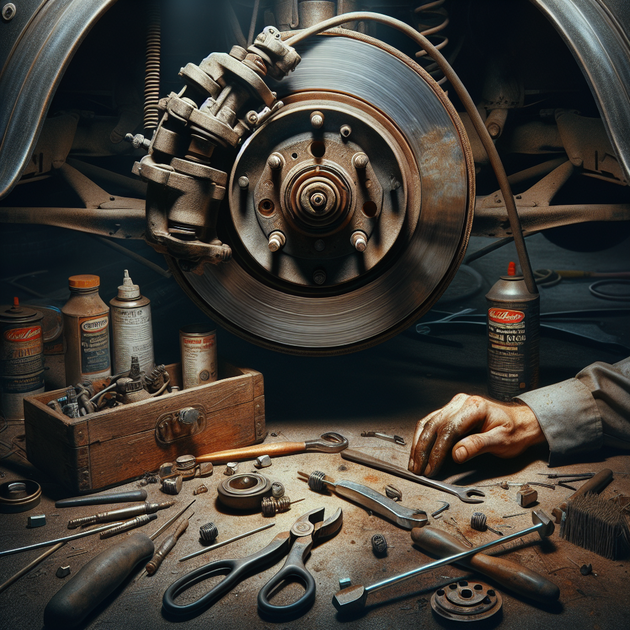Ever felt like every step of a simple car repair turns into an obstacle course? If you’re working on drum brakes and wondering if your wheel cylinder needs another replacement after a series of mishaps, you’re not alone. From stripped screws to rounded-off nuts and botched bleeding attempts—this kind of “learning experience” is more common than you think.
Let’s break down what really matters when it comes to deciding if a wheel cylinder is done for—and what you should try before pulling everything apart again.
What Exactly Does the Wheel Cylinder Do?
The wheel cylinder is the small but mighty part that helps push those brake shoes against the drum when you press the pedal. If it fails or leaks, your braking power drops fast. Knowing how it works can make troubleshooting way less stressful. For a quick explainer on all the drum brake parts involved, check out this handy guide from YourMechanic.
So when should you really worry about replacing (or re-replacing) it?
Common Signs Your Wheel Cylinder Needs Attention
If things have gone sideways during your drum brake adventure—like stripped screws, cross-threaded flare nuts, or leaking fluid—the big question is whether the wheel cylinder is still up for the job. Keep an eye out for these classic symptoms:
- Brake fluid leaking from behind the drum
- Mushy or sinking brake pedal feel
- Visible damage or stripped threads on the cylinder or fittings
- Difficulties bleeding brakes (air keeps getting in)
- Brake shoes soaked with fluid
If any of these sound familiar after your recent work—or if you saw fluid spurting out while bleeding with the drum off—it’s a strong sign something’s not sealed right inside.
The Bleeding Mistake That Trips Up Everyone
Here’s a pitfall many DIYers don’t realize at first: Bleeding your brakes before putting the drum back on can cause big problems. Without that solid backing from the drum, when you pump the pedal, the wheel cylinder pistons might overextend and actually pop out—or at least let air in past the seals. That means you could have brand new parts but still end up needing another replacement because air or dirt snuck in.
If this happened during your attempt:
- Check for fluid leaks around both ends of the wheel cylinder.
- Look closely at where the pistons meet the rubber boots—any wetness here is bad news.
- If possible, remove one boot gently and see if there’s fluid inside.
If you spot trouble here or saw pistons move too far out during bleeding—odds are high it’ll need replacing (again).
For future reference on proper bleeding order and technique (especially with drums), see this straightforward visual guide from Advance Auto Parts.
Troubleshooting Before Pulling It All Apart Again
Before giving in to frustration and swapping out another wheel cylinder right away, here are steps worth trying:
- Tighten Connections: Double-check that all flare nuts and screws are snug but not overtightened.
- Re-inspect Threads: Make sure threads aren’t stripped—if they are, they won’t seal properly.
- Cylinder Condition: If there’s no visible leak but only air in lines, try re-bleeding with everything assembled.
- Shoe Placement: Confirm shoes are seated correctly so pistons stay in place during bleeding.
- Brake Fluid Level: Top off as needed—low level invites more air into system.
If after all this there’s still leakage or zero pedal pressure…there’s not much choice but to take things apart and go for another new part. Just remember—even seasoned mechanics sometimes battle these exact issues!
A Quick Story From The Garage
A friend once spent an entire Saturday fighting with his old Civic’s rear drums. Every time he thought he’d fixed one leak or stripped part, another cropped up. His low point? Accidentally launching both pistons across his driveway by pumping with no drum installed! He learned (the hard way) that patience—and double-checking each step—matters way more than brute force or fancy tools. In his case…third time really was the charm.
The Bottom Line: Should You Replace That Wheel Cylinder?
In summary: If there’s any sign of leakage after bleeding (especially if done without the drum), visible damage to threads or fittings, or persistent loss of pedal pressure—it’s safest to replace that wheel cylinder again. You’ll save yourself headaches later by getting it right now rather than fighting recurring problems down the line.
For even more practical advice on handling stubborn fasteners and avoiding thread damage during brake work, try this simple walkthrough from AxleAddict.
Everyone makes mistakes working on their car at first—but each one gets you closer to knowing exactly what not to do next time!
Your turn: What was your worst struggle during a DIY car repair—and how did you finally solve it? Drop your story below!

Leave a Reply